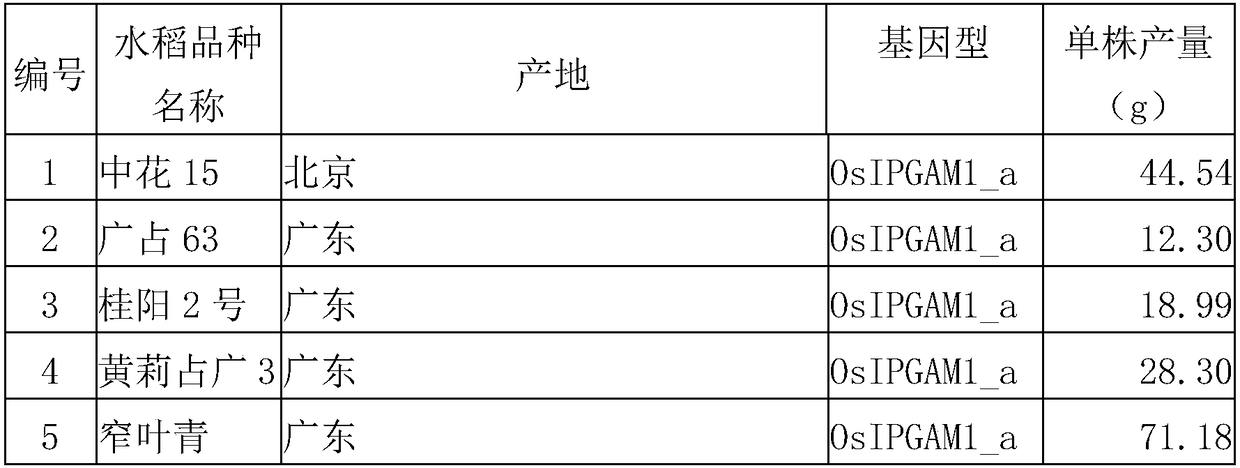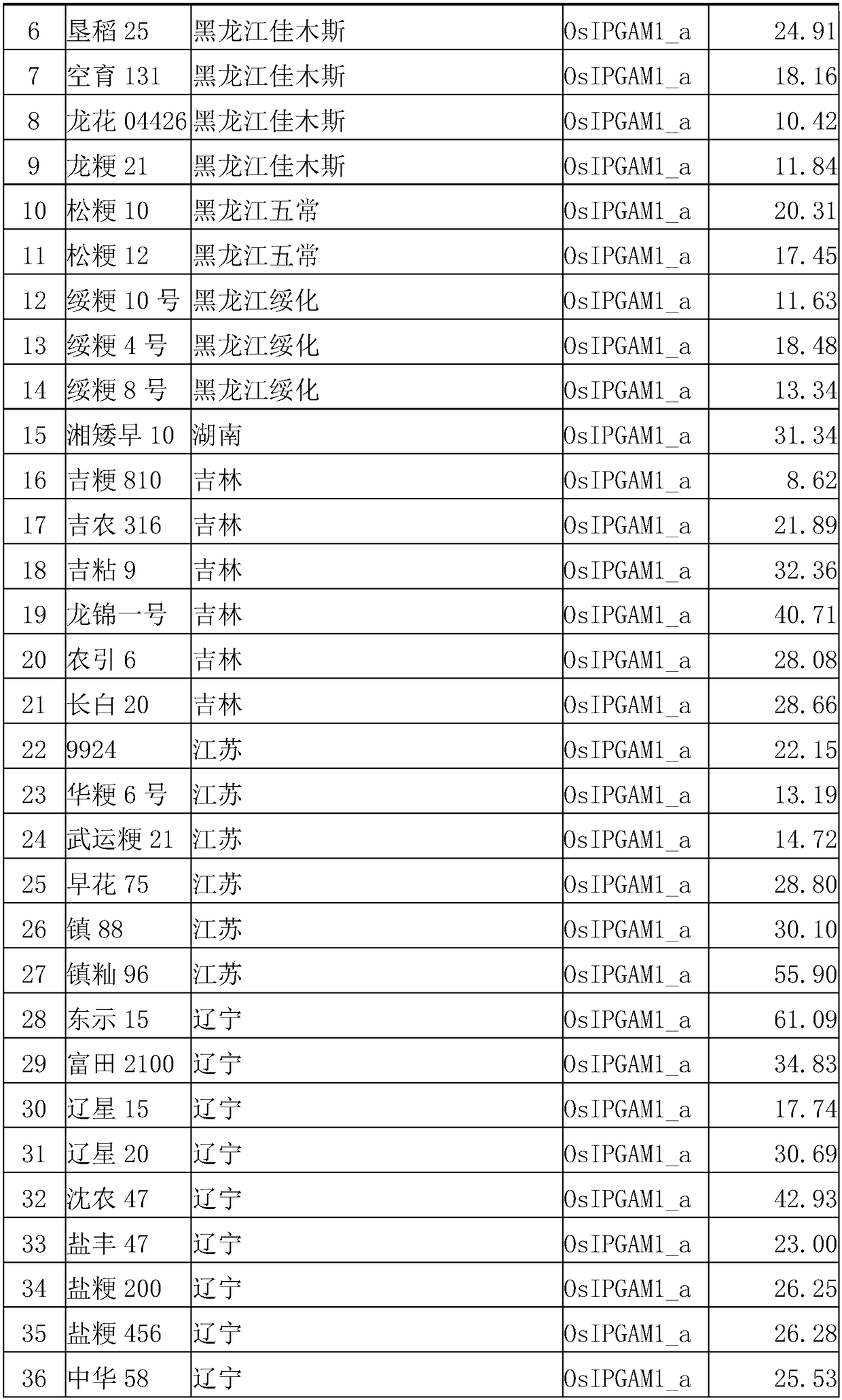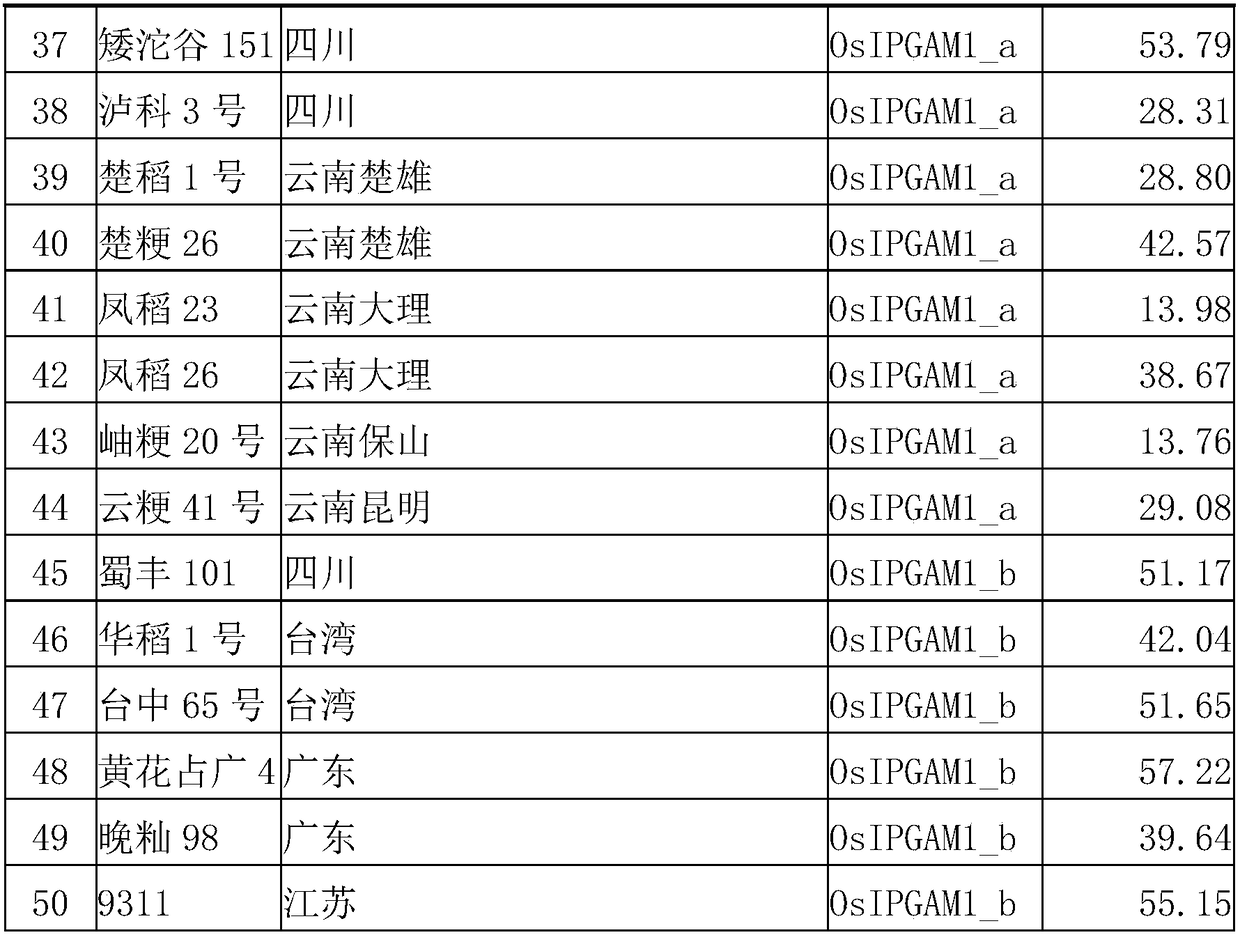Phosphoglyceric acid mutase gene segment capable of improving yield of paddy rice and application of phosphoglyceric acid mutase gene segment
A technology of rice and fragments, applied in the fields of application, genetic engineering, plant genetic improvement, etc., to achieve the effect of high accuracy and simple operation
- Summary
- Abstract
- Description
- Claims
- Application Information
AI Technical Summary
Problems solved by technology
Method used
Image
Examples
Embodiment 1
[0067] Embodiment 1, design and synthesis of primers
[0068] Phosphoside oleic acid is one of the basic raw materials for the synthesis of various substances in rice. In the rice genome, one gene (LOC_Os01g60190.2) on chromosome 1 was annotated as a gene encoding phosphoside oleate mutase (EC 5.4.2.12, 2,3-bisphosphoglycerate-independent phosphoglycerate mutase 1; OsIPGAM1) (hereinafter abbreviated as OsIPGAM1 gene). Through a large number of preliminary experiments and sequence comparisons, the inventors of the present invention have found that there are two allele fragments in the OsIPGAM1 gene (one kind of allele fragment is named as the allele fragment OsIPGAM1_a as shown in sequence 1 of the sequence table; the other An allele fragment is shown in Sequence 2 of the Sequence Listing, named allele fragment OsIPGAM1_b), and they are related to rice yield per plant.
[0069] A specific primer pair was designed according to the above two allelic fragments, consisting of pri...
Embodiment 2
[0072] Example 2, Establishment of a typing method based on allele fragments in rice
[0073] The established method is as follows:
[0074] 1. Using the genomic DNA (about 10-100 ng) of the rice to be tested as a template, a specific primer pair composed of primer 1 and primer 2 is used to perform PCR amplification to obtain a PCR amplification product.
[0075] The reaction program of PCR amplification: 95°C for 5 minutes; 35 cycles of 95°C for 30 seconds, 60°C for 1 minute, and 72°C for 1 minute; 72°C for 8 minutes.
[0076] 2. After step 1 is completed, the PCR amplification product is sequenced, and the following judgment is made according to the sequencing result: if there is only one PCR amplification product, and as shown in sequence 1 in the sequence table, the genotype of the rice to be tested is OsIPGAM1_a Homozygous; if there is only one PCR amplification product, and as shown in sequence 2 in the sequence listing, the genotype of the rice to be tested is OsIPGAM1...
Embodiment 3
[0078] Example 3, Correlation analysis between genotypes based on allelic fragments and rice yield per plant in rice
[0079] 1. Statistical yield per plant of different rice varieties
[0080] In 2014, multiple rice varieties were planted in Sanya City and Beijing City, Hainan Province (see Table 1 and Table 2 for details, see the second column for the name of the rice variety, see the third column for the origin of the rice variety, and see the 2009 number of some rice varieties in column 6). A completely randomized block test design was adopted in the field. After the rice is mature, the rice plants are harvested per plant, weighed, and averaged to obtain the yield per plant of the variety (results are shown in Table 1 and Table 2, column 5).
[0081] Two, according to the typing method established in embodiment 2, detect the genotype of each rice variety (results are shown in Table 1 and Table 2, the 4th row).
PUM
 Login to View More
Login to View More Abstract
Description
Claims
Application Information
 Login to View More
Login to View More - R&D
- Intellectual Property
- Life Sciences
- Materials
- Tech Scout
- Unparalleled Data Quality
- Higher Quality Content
- 60% Fewer Hallucinations
Browse by: Latest US Patents, China's latest patents, Technical Efficacy Thesaurus, Application Domain, Technology Topic, Popular Technical Reports.
© 2025 PatSnap. All rights reserved.Legal|Privacy policy|Modern Slavery Act Transparency Statement|Sitemap|About US| Contact US: help@patsnap.com



